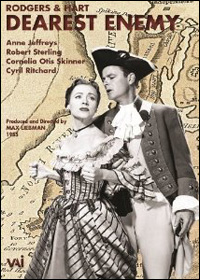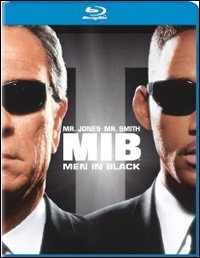
*
John Malkovich started his career in 1976 at Steppenwolf in Chicago, making a startling New York debut with their 1980 transfer of Sam Shepard's True West. Malkovich returned in 1984 as director of Lanford Wilson's Balm in Gilead, and hit Broadway later that year as Biff in the Dustin Hoffman "Death of a Salesman." That same year he made two arresting screen appearances, in "Places in the Heart" and "The Killing Fields."
Malkovich has always been a distinctive actor, to say the least. This does not quite explain how someone — the someone being screenwriter Charlie Kaufman — came up with the 1999 film Being John Malkovich [Criterion]. "Being Cary Grant" or "Being Marlon Brando" might seem far likelier; despite his sterling credits, Malkovich was certainly not a household word. Adding to the strangeness of the film was the casting of John Malkovich as "John Horatio Malkovich," the scenarist's fabrication of a Malkovich character.
Oddest thing about this decidedly odd project is how mesmerizingly good it is. For years, several images have remained with me like half-lived dreams: the notion of the 7-1/2 floor; and the transport shoot which takes travelers into Malkovich's head, for fifteen minutes, and then dumps them with a thud beside the New Jersey Turnpike. I have long avoided revisiting the movie, not wanting to be disappointed if what I originally found so special seemed pale upon a second viewing. With "Being John Malkovich" now on Blu-ray, the time was right.
It turns out that the film is every bit as impressive. Kaufman and director Spike Jonze create an extraordinary world; you sit there thinking--at least, I sat there thinking — how did someone dream this up? Take that scene with Malkovich, himself, "being" Malkovich — or rather being within Malkovich — afloat in a world of Malkoviches mumbling "Malkovich, Malkovich." This is not formulaic hackwork. John Cusack is fine as the central character, Catherine Keener is especially good as the seductress, and there is an keen performance from an elderly actor who turns out to be Orson Bean. Most notable, in retrospect, is the hero's plain-and-drab-and-mousy wife, an animal lover who spends the climactic section of the film locked in a cage with a chimpanzee. This is Cameron Diaz, just after the release of "There's Something about Mary." Talk about casting against type. But it is Malkovich's show, really.
The newly restored transfer — under the supervision of director Jonze — is accompanied on the Blu-ray by a new audio commentary by filmmaker Michel Fondry, a new behind-the-scenes documentary by Lance Bangs, a new conversation with Malkovich, a new interview with Jonze, and more. The booklet is less comprehensive than typical from Criterion, presumably on purpose. The centerpiece is an interview between Jonze and pop-culture critic Perkus Tooth — whoever that might be — that is enigmatically cryptic enough to make it thoroughly unreadable. For me, at least.
Visit PlaybillStore.com to check out theatre-related DVDs for sale.
 |
||
| Cover art for "Victor Victoria" |
This is the one about the singer — Julie Andrews, wife to Edwards — who pretends to be a man pretending to be a woman pretending to be a man etc. Everything works exceptionally well (except for some tired "Pink Panther"-like detective humor). Andrews does a fine job; I don't suppose any viewer ever thought for a moment that she was a man, but hey — this is the movies. James Garner is good as the Chicago mobster who falls for the guy pretending to be a girl who really is a girl. Lesley Ann Warren is suitably outrageous as the Chicago dancer Garner dumps for his female impersonator, while Alex Karras — former defensive tackle for the Detroit Lions — is extremely funny as Garner's bodyguard.
The treat of the movie is Robert Preston, as an aging performer who takes in the unemployed soprano Victoria and transforms her into the suavely seductive Victor. When Preston and Andrews get up there and do a musical comedy number together — "You and Me," by Henry Mancini and Leslie Bricusse — you are watching musical comedy perfection. Preston — who died in 1987 — was fatally missed when Edwards turned the film into a sub-par Broadway musical in 1995. The stage Victor/Victoria was a mess in many areas, yes; but it would have turned out way better if only they had an actor like Preston who could effortlessly win over the audience with just a twinkle in the eye.
"Victor Victoria" (the film) has now been rereleased as a DVD-on-demand from Warner Archive. This one is a real treat, thanks to Andrews, Preston and — yes — Blake Edwards. Warner Archive is simultaneously releasing two other minor Edwards titles: "S.O.B.", the 1981 film in which Julie famously bared her breasts (and it's a sad thing when that's the most memorable moment); and "Skin Deep," a John Ritter starrer from 1989 in which the most memorable moment centers on two glow-in-the-dark condoms. "The comedy that glows in the dark" is what they used as a tag line in the ads, which sounds kind of desperate.
*
 |
||
| Cover art for "Dearest Enemy" |
Dearest Enemy quickly disappeared, remaining a mere footnote on the boys' resume. So much so that when Liebman phoned for the rights in 1955, Rodgers presumably said "let 'em, but why on earth would they want to do that?" The answer might be that Liebman was searching for something suitable for the highly talented Anne Jeffreys and her husband, the apparently not-as-talented Robert Sterling; the pair's sitcom "Topper" had just gone off the air. Or perhaps Liebman wanted to follow up his success, earlier that year, with an adaptation of A Connecticut Yankee (which had been the fifth R & H hit in the aforementioned string).
And so we have Dearest Enemy. A curiosity for Rodgers & Hart fans, yes, but not one which stands out as a lost gem. The score is mild, featuring a couple of pleasant tunes, "Here In My Arms" and "Bye and Bye." Both attained a certain amount of popularity at the time, but neither make you perk up your ears like the boys' best pre-1927 songs ("Manhattan," "Mountain Greenery," "The Blue Room," "Sleepyhead," "Where's That Rainbow.") However, we do get practically the entire score; and when was the last time you heard "Sweet Peter" (as in Stuyvesant) or "The Hermits"?
Dearest Enemy is suggested by the true story of one Mary Lindley Murray, a Manhattan widow who on September 15, 1776 entertained the Redcoats long enough to allow General Washington to escape to Harlem. Murray's manor house, on a hill at Park Avenue and 36th Street, is long gone. So is the hill itself, although the neighborhood is still called "Murray Hill."
The original book by Herb Fields seems not to have been so hot, so there were no complaints when Liebman assigned his staff guys to drum up a new and apparently pretty much altered one. The staff guys being William Friedberg and Neil Simon. Yes, Neil Simon, eight years before he became Neil Simon. The seventy-seven minute production is on the primitive side, although the quaintish music is somewhat enlivened by arranger Irv Kostal.
Joining Ms. Jeffreys and her husband is Cyril Ritchard, who had just finished hooking around with Mary Martin in Peter Pan. Ritchard, as General Howe, makes the most out of the material; he is the only performer who looks like he knows what he's doing (and like he is thoroughly enjoying himself). Cornelia Otis Skinner also stars, as Mrs. Murray.
As I was watching the newly rescued DVD of the 1955 Dearest Enemy, I received an email from someone else altogether telling me that plans are underway for a full recording of the 1925 version, with full orchestra. So while we might not have heretofore heard much about Rodgers & Hart's Dearest Enemy, the show might soon become considerably more familiar.
Visit PlaybillStore.com to check out theatre-related DVDs for sale.
 |
||
| Cover art for "Men in Black" |
*
 |
||
| Cover art for "On Singing Onstage" |
Craig knew his field. Back in the late 1940s, a group of young non-singing actors — including Karl Malden and Roddy McDowall — asked for a few pointers so they could get by, without making fools of themselves, when they needed to sing. This led to Craig's career as a very-much-in-demand teacher specializing in Broadway. He wrote two interesting musicals, the Nancy Walker revue Phoenix '55 and the Nancy Walker musical Copper and Brass. Craig was married to Walker from 1951 until she died in 1992. He died in 1998.
The promotional material includes two quotes pertinent enough to repeat here. From Harold Prince: "David Craig knows more about singing in the musical theatre than anyone in this country." And from the notoriously difficult-to-please Jerome Robbins: "What David Craig has contributed to the American musical cannot be estimated in words. It was always strikingly clear when a singer who auditioned for me had been trained by him. David Craig is a must." You get the point. Somewhere along the way, Craig made a series of training tapes: six 90-minute master classes under various headings (Technique, Subtext, Ballads, Uptempo, Performance). On Singing Onstage [Applause] has now been released on DVD. For those interested in singing onstage, Craig offers a half-century of experience. From the last century, yes; but while aspects of the world have changed, truth in musical theatre performance remains a prime asset.
(Steven Suskin is author of the recently released Updated and Expanded Fourth Edition of "Show Tunes" as well as "The Sound of Broadway Music: A Book of Orchestrators and Orchestrations," "Second Act Trouble" and the "Opening Night on Broadway" books. He also pens Playbill.com's Book Shelf and On the Record columns. He can be reached at [email protected].)
*
Visit PlaybillStore.com to check out theatre-related DVDs for sale.









